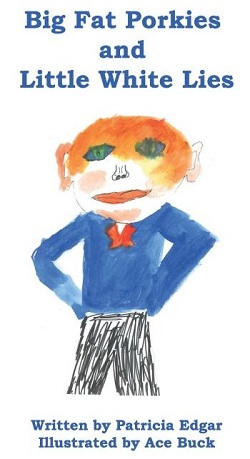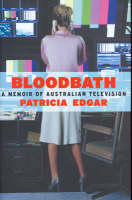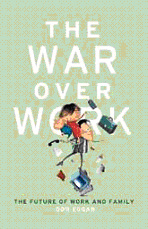A challenge to the status quo in children's media in Australia
50th ANNIVERSARY YOUNG MEDIA AUSTRALIA. Held at ACMI
Patricia Edgar 30 March 2007
This morning I want to talk about the way we may get back to serving the child audience. And there is no better place to outline a strategy than in the company of this rare breed of advocates on the occasion of 50 years of advocacy by Young Media Australia.
Fifty years ago, eager television licensees made promises and convinced the Australian Broadcasting Control Board, the regulator, that they would serve the Australian audience, including its children, well. And for a time they did. Video tape did not exist and Australian content including children's programs went to air live. Australians took to television, as we do to all media, like rabbits took to the landscape. But once television penetrated most households, and videotape was invented, live children's programming disappeared from the schedules.
By the end of the 60's television for Australian children was a wasteland of cheap American sitcoms run repeatedly in after-school hours. Australian children's programs were confined to an education quota of ten miserable hours per month.
There was general public unease, and in that climate two Australian women left their suburban back yards, raised their voices and asked the commercial networks, 'What are you doing to our children?'
The pessimistic philosopher Arthur Schopenhauer said of truth: 'it comes via 3 stages: first it is ridiculed; second it meets violent opposition; third it is accepted as self-evident'. (Geordie Williamson, Annals of annihilation, The Australian Literary Review, March 7, 2007) I think Barbara Biggins and I have been down that path. First we were ridiculed. We were called 'self-appointed moral guardians', 'Do-gooders' who wanted to administer 'castor- oil television'. At one time I was described on Channel 10 as 'a Doctor of clothes pegs who did not know which end she was talking out of'. The insults always suggested a woman could know nothing about the business of television.
I would like to pay tribute to Barbara Biggins who has been the major spokesperson for the Australian Council for Children's Film and Television , (now YMA) over the past three decades. Barbara transformed her organisation from a genteel group, who lobbied for the distribution of British children's films, to one more relevant to the times. She saw that television was the medium worth fighting for. The ACCFT became an organization to be reckoned with. We did not always agree on approach, but we were always on the same side of the ethical argument.
I was an academic who had studied in the United States and was establishing a Centre for the Study of Media and Communication at LaTrobe University. Unexpectedly I was invited to chair an Advisory Committee for the Australian Broadcasting Control Board to examine program standards for radio and television; children's programming was part of that brief.
The early 70s were very interesting times. We had a maverick Prime Minister called John Gorton. Phillip Adams and Barry Jones persuaded him that Australia should have a film industry to promote our cultural heritage and tell Australian stories. Along came Gough Whitlam in 1972 campaigning under the electoral slogan “It's time”. It was time for social, cultural and political change. It was time for Australia to stand up as a nation, time to take pride in being Australian; time to own our accents, to recognize ourselves as a unique culture, not a colonial outpost of Britain or the United States. One of the major ways to achieve this change was to insist that our mass media broadcast Australian content.
The Australian Broadcasting Control Board, in setting up the Advisory Committee, was responding to political pressure after inertia for 20 years; the values of the regulator were those of the commercial organizations it was required to police. With a change in the Canberra culture I found myself heading a Committee with an opportunity to develop a blueprint for broadcasting reform. We had barely begun work when Gough Whitlam was sacked. The networks immediately lobbied to abolish not only the Committee but the ABCB. They were after self-regulation and protection from the unruly elements that had begun to gather at community meetings and challenge their complacency.
The Program Committee decided to finish the job quickly and our published reports outlined a series of reforms for children's programs. (I relate that history in my recently published book, Bloodbath: a memoir of Australian television.) We began with a blank sheet and through the efforts of the lobby groups at that time (including the ACCFT) we achieved a system of regulation and subsidy that was the envy of countries around the world, recognized as best practice for the interests of children.
It was a model with children's interests at its centre, aimed at generating Australian production for Australian children. Those standards generated programs which allowed Australian children to see, hear, and understand themselves through Australian quota and drama. The by-product was we established an industry which came to be recognized internationally as one of the best in the world. Our programs won awards, sold into more than a hundred countries, and Australian stories with their unique humor and insight into the world of children, were in demand by the most discerning buyers at world markets.
In some respects we achieved more than we set out to do, in other respects we failed. We did prove Australians could make very good television. We proved children could act. We proved Australian children enjoyed watching themselves on television. But, notably, we failed to enthuse FACTS - The Federation of Commercial Television Stations. FACTS opposed the Standards through the Courts, forcing the government of the day to change the legislation to require networks to comply. When they lost the legal battle the networks complied grudgingly. Their favourite tactic, still, is to schedule C programs when few children are in the audience and give them little promotion.
The networks are one problem, but another is the way by which producers, the beneficiaries of the regulatory system, became complicit in exploiting the child audience through a system set up to serve that audience.
In 1999, twenty years after the introduction of the Children's Standards, the ABT undertook an evaluation. This study revealed an erosion of the standards by the networks and the producers and the impact of an increasingly commercialised children's industry. When the standards were first introduced, 73% of all C programs were magazine format programs and only 9% game shows. By 1999 game shows dominated, comprising 43% of program hours. The drama quota had introduced exceptional live action programming to Australian children. By 1999, 32% of the C drama classified was animation. The networks wanted volume, not diversity. They wanted to fill a slot and forget about the program. They did not want the trouble of promoting short series. Anthologies, which had been the approach of the ACTF, became impossible to sell and 26 episode drama series were the programs of choice for the Networks.
With the Tribunal acting with the best of intentions and in the best interest of the child audience, in 1995 the drama quota became 32 hours per Network per year - a fourfold increase from when the quota was first introduced - but with the trend to high volume series, the number of titles being classified decreased, and so the number of independent producers making C drama decreased.
Production for children became a cut throat business. Financing became increasingly difficult as the networks dropped their license fees, so there was a greater dependence on foreign partners. This dependence favoured animation production and programs with little cultural relevance to Australia so some producers, willing to exploit the system, leant their names to off-shore productions which were still being granted a C classification. What began as an important service for children, became a business for a small number of independent producers who could achieve distribution deals.
The time slots for these drama programs also changed. During the first decade, 46% of drama programs were scheduled during the early evening timeslots. By 1999 there were no evening broadcasts of C Australian drama.
One measure of the quality of programs is the awards they win. In the first decade, C drama won an impressive list of prestigious awards around the world - in total 97 awards for excellence. However there was a significant decline in the number of awards won after 1996.
The report demonstrated clearly that, after a very successful beginning, the regulatory structure was no longer achieving the intended result and it identified the weaknesses in the system as a lack of diversity in programming, loss of cultural relevance, exploitation of our carefully structured system by foreign interests, the growth of animated product, the decrease in the number of independent producers actively working in children's programming. But nothing has been done to correct the problems identified in 1999.
John Howard became Prime Minister in 1995 and a philosophy of economic rationalism prevailed. From 1995 a small group of independent producers lobbied, employing very dirty tactics, (read Bloodbath) for the Australian Children's Television Foundation to cease producing programs, because they argued they were unfairly competitive with them. In effect the individual producers claimed the system of regulation and subsidy was there to support their production careers.
The Foundation had consistently produced popular, quality programs that were distinctly Australian, opened up new markets overseas and created new finance models for Australian-originated production. At the end of my tenure as Director of the ACTF,, the Foundation ceased its own productions and became the distribution arm of the independent industry
Thirty years after the Standards were formulated we have programs that are stale, formulaic, catering to overseas investors. Innovation is rare, the market dictates the style of the product and branding is the name of the game. A program announced early this month aptly and shamelessly describes the state of affairs in children's programming now. It's The Thong Family and the producers are hawking their cartoon series to TV stations offering a range of licensing opportunities. They include thongs - naturally- shirts, drink-bottles, MP3 player covers, hats, bags. The producers claimed 300 people have approached them ready to take the brand and place the characters on everything from apparel to novelty lines - 'people love it and want it'. (The Australian, Thursday, March 1, 2007. 'Aussie battlers to blue with Simpsons')
The interesting thing is that so far The Thongs live only in name, a set of five giant foam costumes and a 16 page glossy booklet promoting them as a unique licensing and merchandising opportunity. They are just the latest attempt to exploit the child market. The child's educational, social and development needs are no longer the starting point for a program - just as they were not the starting point for Bananas in Pyjamas and Teletubbies.
The idea for a brand with its accompanying merchandise comes first, then someone dreams up the program. They have dredged literature worldwide in the search for characters suitable to branding. Now it can be Thongs, Cushions - as in the ABC's Five Minutes More - and anything you can animate really. The ABC has put out a new call, for another high volume five minute series with merchandising potential.
Imagination and desperation combine and producers dream that they might just lead the next marketing phenomenon. They won't of course. What you need to achieve that is a network. But if you've got a network, like the ABC, and you put the program on for five minutes, twice a day each day of the week, year after year, chances are you going to sell a lot of merchandise. Walk into an ABC store and you can pick up a tacky ABC Kids Wish List catalogue with the sub-title 'Everything you could wish for..” based on the ABC programs.
Reform of the Program Standards is well overdue, but this time round it is not only the programs and their content that need review, but their technical, educational and social context must be considered if we are to save children from a looming social disaster that I believe is akin to climate change in its dimension. We need to look at the media's role in their health, education and social well-being and establish a system of regulation appropriate for the 21st century.
ACMA, The Australian Communication and Media Authority, have announced a review of the current, obsolete Standards. These Standards require the commercial networks to air 260 hours of C programming annually, half of it first-release Australian shows. There is a 32 hour annual quota of first release Australian Drama for each network and a Monday to Friday requirement to air a 30 minute pre-school program without advertising.
ACMA's task is complex, but it has three decades of experience to draw on. The people in this room who have an interest in activism on behalf of children must ensure that ACMA does not shy away from its task
The first issue for ACMA is the technology itself. Today's media include free-to-air analog and digital television, subscription television, portable audio and video media players such as iPods and MP3 players, multi-media, mobile phones, Internet-based communications and social activities such as instant messaging, chat rooms, online gaming, blogging - the use and creation of user-generated media.
Children are familiar with new media, adept at using more than one device at a time, and keen to explore every new possibility.
Such media include the immensely popular Web video site YouTube which has come to public attention with the exposure of the DVD (distributed for sale and shown on YouTube), produced by a group of Werribee schoolboys who have been charged by the Victoria police for their filmed abuse of a young woman. The mixed response to this video among teenagers interviewed reveals a confusion of values in a society where even outrageous and criminal behaviour may be turned into a commodity. Many schools have banned YouTube. But banning new technology is not going to be a solution in the longer term.
This is the multimedia generation and we must adapt to their needs. Today's kids are smart and they will use the technology and find what they want to find out, in secret if necessary.
The dilemma in all of this is that too many teachers and parents are left behind. Some see new media developments as threatening to education, good community values and social solidarity, just as teachers in the 70s failed to see the educational potential of television. Such attitudes help no-one. We all have an obligation to get on top of new media, in the home, the school and the community, if we are to help this generation of kids maximise their options in the new technological age, and ensure the media don't damage their development.
An example of the confusion about which direction educators should pursue is the split which has emerged across Victorian schools about whether the iPod should be banned or embraced as a valuable education tool. It is demonised by some as a distraction and the target of playground theft, but other schools are using lap-top computers and video MP3s to listen to language recordings, document life stories, follow instructional cricket video while standing on the pitch. Evidence suggests students become more engaged using iPods that allow them to follow things at their own pace.
The ACMA report will include a survey of parents' behaviours and attitudes to find out how ordinary families mediate media experiences. Most parents are not irresponsible, they want the best for their children, but they cannot achieve this alone. The mounting evidence demonstrates that the regulation of the media - an area where politicians hate to go - is essential for children to survive on this planet.
The second major issue for ACMA is advertising
My first grandson is 12 years old and during his lifetime his generation has become a lucrative global market. In the US, the marketing flagship for the Western world, budgets for advertising to children under the age of 12 have risen from $100 million to $16 billion. US children directly influenced the spending of up to $300 billion in 2000 - that's 7 years ago. Australia Scan, a social research company, reports the 'tween market in Australia (which targets 7 to 13 olds) is worth more than $10 billion.
Advertising to children is no longer a discrete area to be separated from program content; advertising has become program content and part of a conspiracy which undermines child health.
Between 1985 and 1997 - the years which coincide with the commercialisation of children's programming - obesity has become the single biggest threat to child health in the Western world, with juvenile diabetes at a record level. (I trace the history of the commercialisation of children's program content and the merging of advertising within programs in an article for The Age, 'Childhood under Siege' on January 14 this year.) The problems we face are discussed so frequently that everyone in this room will be aware that food disorders are now the major diseases children face.
Program content is linked with fast food that is high in fat and sugar, in marketing campaigns designed by the best brains to be irresistible to the young. Bigger is always better.
At another extreme, teen magazines present an unreal image of young girls, air-brushed to perfection, which gullible readers, obsessed with appearance, strive to match. Unreal images encourage dangerous dieting habits that can lead to smoking, depression, serious physical and mental health issues. Teenagers with acne have suicidal thoughts.
Anorexia is the third most common disease in Australian females aged 15 to 24.
It's time for the advertising industry to take responsibility as the evidence of damage to child health mounts. And we need to put to rest the argument from the television networks that children's production must be paid for by advertising. Children have a right to programs that are designed with their best interests as a focus, and advertising that is not in their interest should be banned.
In the UK there is a very interesting dilemma playing out. Ofcom, the regulator, has announced all food advertising aimed at children will be banned, not only during children's TV shows but on adult programs that appeal to young people. The ITV commercial broadcaster has responded saying it will cut children's program production. The BBC's response is that they will move their children's programs to BBC2. The producers' response was to attempt to prevent the ban coming into play before they found an alternative source of funding for production. The UK lobbyists who see their role as protecting children see television producers as part of the problem, because - as in Australia - they have been complicit with advertisers in the commercialised programming they produce. So the debate in the UK, where a Save Kids TV Campaign is under way, is worth watching.
Nothing excites the industry more than seeing lobbyists who seek to put pressure on them at war among themselves. The debate about violence on TV that has gone on for decades is a prime example of the way this dynamic works. Social science research is a most inadequate tool for solving contentious questions. You cannot prove by research that TV violence by itself, without a complex interaction with a range of other issues - like poverty, deprivation, alienation, an unstable home, peer pressure, doing poorly at school, having few friends - is the 'cause' of violence in society. And different types of research studies produce different results - studies in the laboratory are different from studies in a social context.
The industry thrives amid such disputes because in the absence of clear evidence, they can preserve the status quo and even stir the pot further by funding more research to underline the complexity of findings. In the US, researchers have finally given up on simple 'effects' studies, recognizing they will not give clear answers.
The new multi-media , multi-platform environment is easy territory for the industry to confuse the parents about advertising and program content.
We have moved from a broadcasting structure where children had no choice but to consume the media they were given, on radio, film or television, to one where children, not only access the media of their choice, but play a large role in creating it for themselves.
More and more children are going online to access whatever content they want. And nowhere is the partnership between toys, food, fashion and media for kids more apparent and well integrated than online. Creative forms of marketing draw attention to brands and blur advertising and entertainment. Sex, increasingly, is part of the deal.
My grandchildren and their mates watch television less now and certainly they are not watching what is produced in the name of children's television. They play games and spend time on the web. The rise of social-networking websites and user-generated content is where they are going and we need to catch up with them, fast.
Mobile phones are the next growth engine for the worldwide-web. Texting is just the start. Carriers are recognizing the revenue potential in this market and devising smart ways to entice the young. Millions of dollars are being invested in advertising formats to bombard mobiles - another opportunity the industry perceives and exploits.
Trying to slow kids down and applying prohibitions will never work. Schools that have banned YouTube are finding kids quickly learn to download the software they need to break any technical barriers. Just as kids have to be taught to be street smart, they have to be taught to be media-smart and net-savvy.
The debate about advertising and children is bedeviled by sophistry. The food and beverage industries insist we should exercise more; the media industries insist it is not their problem, they only offer entertainment. Government calls on parents to be the guardians of their children: they can turn off the set, say no, refuse to buy, feed their children healthy food. The advertising industry insists it is responsible while it pushes the boundaries with skilled campaigns, using sex increasingly, to sell to young people. As we debate the pros and cons of regulation and parental responsibility, exercise, fast food, children's fashion and sexuality -- and advertising's linking role in all things -- we're losing the battle for quality children's programs.
The television industry worldwide has forsaken its responsibility to children's development as marketing to them drives the agenda. So children watch programs of inconsequence which consume their time, when their sharp acquisitive brains should be stretched and stimulated.
There is only one responsible answer and that is regulation to ensure the provision of children's programs is an obligation and the exploitation of children as a market should cease. ACMA's time has come to take a stand, not tinker at the edges of reform.
So what are the principal ingredients of program standards in the 21st century?
The days when simple television quotas would do the job are gone. Although children are not sitting watching television as much and using new media more and more, television remains an important source of
Australian content, as well as a platform for experimental hybrid programs, and children's own productions.
Firstly the drama quota and Pre-school programming remain very important.
Children need the life-sustaining, Australian stories that television is capable of telling them - we all do - the drama quota serves that purpose and remains an important regulatory tool.
Our Prime Minister John Howard has identified a lack of core values in Australian society. The Prime Minister understands true communities are bound together by the values and experiences their members share. The deeper and more strongly held those common values, the stronger the sense of community. Preserving a sense of community is important for responsible, social, human behaviour.
Howard's ideas for developing a cohesive society include, introducing a national history curriculum and tests for future citizens who are immigrants to this country about their knowledge of Australia. I have not heard him mention Australian content on television, although the Government did give Film Australia $7.5 million to make a documentary series on Australian history. This was a good move for the mass media are the only sure way to reach all Australians. And note the money did not go to individual film makers.
Over the centuries storytelling has served the function of bonding community groups and print, television and film serve that function for larger populations. Mass media can be a powerful unifying force, not by presenting politically correct versions of what it means to be an Australian but by presenting the complexity of the society we share. Media are fulfilling this role less and less as the Australian content we share is increasingly made up of quiz shows and reality shows, interspersed with wall-to-wall advertising.
We must discriminate for children, and we must decide what kind of stories we should be telling our children. Classification processes that take tough decisions are still required.
Once made, the drama programs should be seen by children and promoted to them, not buried in the television schedule. Volume is not as important as quality. The rot set in to the system when the drama quota was increased in 1995. I would propose the quota be halved, but that the hours produced should be high budget and there should be a scheduling requirement for screening when large numbers of children can be in the audience. That is in the early evening. Programs should be promoted as 'event' television.
The licence fees paid for programs should be regulated and as the networks can't always be trusted, there could be a levy imposed across all licencees to ensure budgets are realistic. Good quality children's drama will have a long shelf life and should be repeated several times as part of the quota requirement. These programs would soon add up to a resource for the future. Children enter the audience every year and they enjoy repeats of good programming. Such an approach is not as challenging as it may sound, and we have demonstrated Australia can produce the type of children's drama I am talking about.
Preschool programs
Since the introduction of the Standards 30 years ago we have learnt a great deal about early childhood development. In the first five years of life children's bodies and brains are growing at startling speed. If children spend those early years in a deprived environment they are disadvantaged for life.
We've also learnt through social science that there is not just one kind of cognitive skill or human intelligence.(Gardner) There are distinct intelligences for dealing with language, numbers, music, spatial information, use of one's body, interaction with other individuals, reflecting upon oneself and one's feelings. All normal children possess this range of intelligences but each intelligence needs development, and storytelling is an effective means for developing children's inter-personal and intra-personal skills.
Pre-schoolers are among the heaviest television viewers. Television is an under-used resource which has been allowed to become simply a marketing tool. Nothing on air produced in Australia measures up to the standard it should be. PlaySchoolis out-of-date, nostalgic chalk and talk television. Bananas in Pyjamas is a marketing vehicle and Hi Five is no more a pre school program than Britney Spears and a backing group. All pre-school programs should be reassessed with a requirement for an educational curriculum as their basis.
Whichever way you look at the regulatory issues it is clear education must now be a partner in media policy for children. Media drive the information society and have transformed learning. The web is now the library, and learning is more self-directed. Media and technology are integral to educational child policy. But our administrative systems are struggling to catch up.
We require media education programs for teachers. Young people should be trained, both in using the new media so they can structure their own stories effectively and learn from them, as well as influencing others in the wider community to listen. Children can provide insights into their own issues and should be given the slots on mainstream media to do so.
Children need to be taught about the social issues involved with the use of technology - responsibility and trust, cyber-bullying, stranger-danger on the web.
Social, health and welfare policy for children can no longer be developed without taking the impact of media into account. Advertising and new forms of content are affecting child health.
The media have very cleverly marginalized their role in all these issues, claiming they simply entertain. But we are not stupid. Or are we? That is the question.
We need integrated policies for children's health, education and social development which have media at their core. The media are central to all areas which govern children's lives.
Media programs we design for children must have educational goals of enhancing the social, emotional and cognitive development of children as the starting point, not goals to sell soft toys or designer clothes.
All media aimed at children must be trustworthy and put the interests of the child as citizen, and outcomes worthy of a good society, above the interests of profit.
Children must be treated as active participants in the production and consumption of their media content. They are pioneering methods of use. But skilled as they may be with using technology, they are not always thoughtful or critical about what they are doing. They need guidance and proper training to express and structure their own legitimate voice.
Effective children's media must take risks, push the boundaries, explore new possibilities, raise new questions, challenge children to think and act effectively and of course be multi-platform.
Alongside new social networking formats, the need for storytelling remains. Drama is the key to our understanding of cultural traditions, values and history. It helps us make sense of life. But the self-insight and emotional empathy that come from powerful stories about the human condition won't come from kids. That is our job.
So what could a new regulatory regime monitored by ACMA look like?
In summary:
Reform of the current C requirements to include
- a new quota for productions by children with new and experimental formats encouraged
- a quota for hybrid programs that link television, computers, mobiles and the internet. This is the area I would be working in if I were still producing. The work underway by VEA Video Education Australia - the major sponsor for this event is breaking new ground I know.
- all pre-school programming should be reassessed to ensure qualifying programs have a sound educational development basis
- the drama quota should be halved. A quota of 16 hours per network per year should be made up of a diversity of programs, not one or two series. These should be well promoted as special events. They should be repeated at least three times in a three year period.
- advertising that exploits children and is potentially harmful to their health should be banned. The UK has taken this action.
The provision of children's programs must remain an obligation on broadcasters and all media carriers as they occupy so much of children's lives and interest.
The schools must be partners in media child policy. They have ignored television's potential for decades; now their role is central.
For every dollar invested there will be a gain. Educated, engaged children mean a future for this planet, improved health, fewer teenage pregnancies, higher school achievement, fewer drop-outs, lifetime opportunities and a better employment record. So we must develop their brain power.
.
That is the challenge, to recognize the power of the media, its potential, and its responsibility in children's development and to take the necessary steps to stop the devastation of their lives resulting from following a model of excess consumption and infinite growth. We should not be afraid to regulate the media, but the job will never be complete. Regulations need to be monitored and reviewed on a regular basis as technology and its uses change over time. We know the media operators are champions at getting around regulations and ACMA and Government need to be determined. That is their job, to work for the interests of children.











